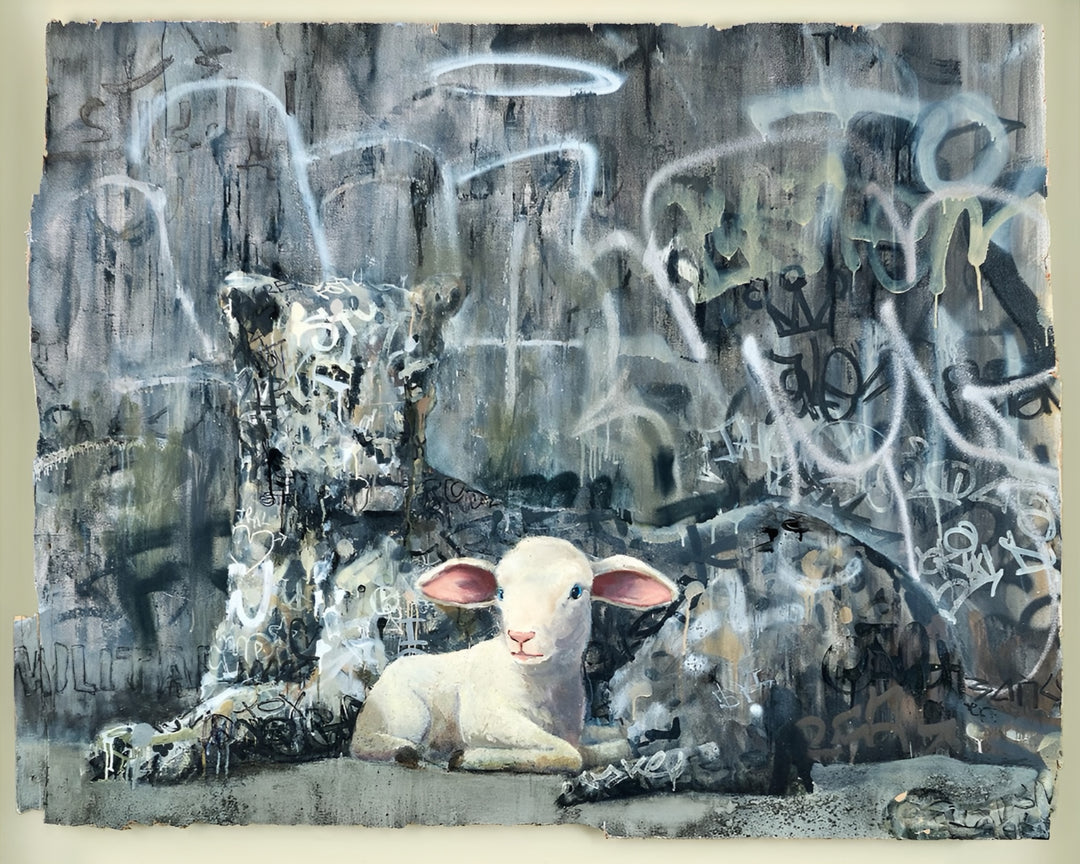
The Leopard and the Lamb - Banksy
| Author: | Banksy |
|---|---|
| Title: | The Leopard and the Lamb |
| Original location: | The Walled Off Hotel, Bethlehem |
| Year: | 2016 |
In "The Leopard and the Lamb," created in 2016, Banksy momentarily steps away from direct urban irony to explore the impossibility of reconciliation through images charged with tension.
The scene shows a white lamb lying next to a vibrantly patterned leopard, rendered in surprising detail from the graphics of a wall with which it blends in green tones; both are set against a graffiti-covered background that blurs the boundaries between domestic and wild, sacred and marginal, the city and its ultimate solution. Technically and visually, the contrast between the organic lines of the feline and the geometric aesthetic of the urban background generates a dynamic of containment and inclusion, as if peace were provisional or watched over by the city, while at the same time, containment is entirely natural to the urban environment, where the individuality of the citizen must be either absorbed, included, or controlled.
In this compositional dynamic, the lamb is not part of this relationship; it is not natural to it (the city), but it ennobles it. The small sheep is desired and embraced by the “included,” the “absorbed”—in this case, the leopard. The lamb is the answer, painted in pure white; it is different from the system but not antagonistic, not its enemy. The piece, executed in acrylic on plywood, demonstrates a precise balance between painterly gesture and technical control, reminding us that street art also aspires, in some way, to material permanence. This work confirms that, in Israel, Banksy chose a language that was not understood. A clear example of this is the mistaken interpretations of his work “Love is in the Air,” also known as “Flower Thrower,” painted on the wall of an auto repair shop. Framed within contemporary urban art, Banksy draws on the legacy of rebellious postmodernism but escapes its victim-oppressor duality to construct a higher, more powerful visual poetics. He has influenced artists like JR, Shepard Fairey, and Blu in the way he connects public space with political narrative.
The title refers to the prophetic passage from Isaiah 11:6, but here the fraternal encounter between predator and victim does not take place in paradise, but in a room at the Walled-Off Hotel in Bethlehem, next to the wall that divides Israel from Palestine. In a world fractured by physical and ideological walls, art becomes the only place where, even if just for an instant, the irreconcilable can coexist; where the system imposes censorship, painting cries out from the ruins left by humanity’s inability to forgive those who have hurt it.